CO2M (Carbon Dioxide Monitoring) Mission
EO
ESA
Atmosphere
Cloud type, amount and cloud top temperature
The Copernicus Anthropogenic Carbon Dioxide Monitoring (CO2M) is a European Space Agency (ESA) mission that will be the first to measure how much carbon dioxide is released into the atmosphere specifically through human activity. The mission is a part of the Copernicus Sentinel Expansion mission, which ESA is developing on behalf of the European Union (EU) and consists of three satellites: CO2M-A, CO2M-B and CO2M-C.
Quick facts
Overview
| Mission type | EO |
| Agency | ESA, EUMETSAT, COM |
| Mission status | Approved |
| Measurement domain | Atmosphere |
| Measurement category | Cloud type, amount and cloud top temperature, Aerosols, Trace gases (excluding ozone) |
| Measurement detailed | Cloud cover, Aerosol optical depth (column/profile), CH4 Mole Fraction, NO2 Mole Fraction, CO2 Mole Fraction |
| Instruments | CLIM, CO2I, MAP |
| Instrument type | Atmospheric chemistry |
| CEOS EO Handbook | See CO2M (Carbon Dioxide Monitoring) Mission summary |
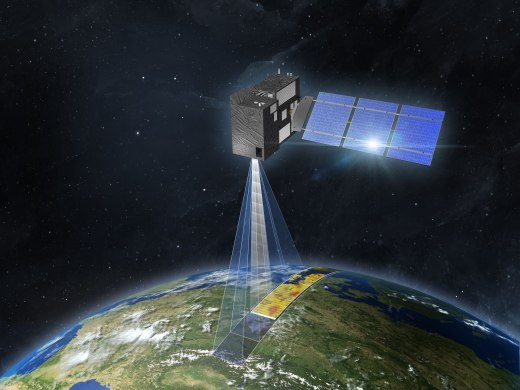
Summary
Mission Capabilities
CO2M will be equipped with three instruments, which will work together to enable accurate measurements of carbon dioxide (CO2) emissions.
The Integrated CO2 and NO2 Imaging Spectrometer (CO2I) will provide CO2, CH4 and NO2 observation with a relatively high spatial resolution in support of estimating anthropogenic emissions, while the 3-band CLoud IMager (CLIM) will detect low and high clouds in the spatial sample of CO2I, allowing the removal of these data from the retrieval process. The Multi-Angular Multi-band Polarimeter (MAP) will copper the CO2 and CH4 retrieval by accurately estimating the effective light path effects of the aerosols.
Performance Specifications
CO2I is a push-broom nadir-scanning spectrometer that will be able to measure CO2 with a precision of 0.7 ppm and CH4 with a precision of 10 ppb at a spatial resolution of 4 km x 4 km and swath width of 250 km.. For the measurement of CO2, it will measure top of atmosphere (TOA) radiance in the Near Infrared (NIR) range at 743-773 nm and in two Shortwave Infrared (SWIR) bands at 1590-1675 nm and 1990-2095 nm. CLIM is a pushbroom multi-purpose imager that will have a spatial resolution of less than 0.4 km x 0.4 km and a swath width of 465 km. It will image in three bands in the Visible (VIS) and SWIR range at 670 nm, 752 nm and 1370 nm to provide images of cloud cover with a Signal-to-Noise Ratio (SNR) greater than 200. MAP will have a spatial resolution of 2 km x 2 km at nadir and a swath width of 300 km. It will measure TOA radiances in 6 narrow filter bands in the VIS and NIR ranges between 410 nm and 865nm.
The three satellites, CO2M-A, CO2M-B, and CO2M-C, will all be in sun-synchronous orbits at an altitude of 735 km and an orbital inclination of 97.7°. The orbital period of these satellites will be 99.5 minutes with a 11-day repeat cycle.
Space and Hardware Components
Otto Hydraulic Bremen (OHB) systems are the main contractor for the satellite development and will lead an industrial consortium to build the satellites. The CO2I and MAP instruments will be supplied by Thales Alenia Space while the CLIM instruments, derived from the ProbaV instrument, will be provided by Optique et Instruments de Précision (OIP) sensors in Belgium.
CO2M Copernicus (Carbon Dioxide Monitoring) Mission
Status References
With last month’s release of the IPCC (Inter-Governmental Panel for Climate Change) Special Report on Global Warming of 1.5°C, it has become even more apparent that current pledges fall short of limiting global warming to the objectives stated in the Paris Agreement. The Paris Agreement agreed by 195 nations at the 21st Conference of the Parties to the United Nations Framework Convention on Climate Change (UNFCCC) in December 2015 included the aim of strengthening the global response to the threat of climate change by “holding the increase in the global average temperature to well below 2°C above pre-industrial levels and pursuing efforts to limit the temperature increase to 1.5°C above pre-industrial levels.” As part of the Paris agreement, all Parties agreed to a global stocktake every five years starting in 2023 to assess the collective progress towards achieving the purpose of the Agreement and to inform of further individual actions to be taken by Parties. 1)
The European Union’s Copernicus program has launched an initiative to support the stocktaking exercise with a new observation-based service to monitor CO2 emissions resulting from human activities. The analysis of these measurements will allow EU member states and other countries to track progress in achieving the Paris Agreement goals.
Providing Comprehensive Emission Data
EU countries, like all other countries that ratified the Paris Agreement, are committed to Nationally Determined Contributions for reductions in their greenhouse gas emissions. These contributions will be assessed through the five-yearly global stocktake. Copernicus’ proposed service will offer observation-based information to make the assessments more comprehensive and consistent worldwide.
Building Observation and Modelling Capacity
To achieve this goal, the European Commission (EC) is working together with the European Space Agency (ESA), the European Organization for the Exploitation of Meteorological Satellites (EUMETSAT) and the European Centre for Medium-Range Weather Forecasts (ECMWF).The initiative develops on existing modelling infrastructure, designs a series of unprecedented satellite and ground-based observation systems, and improves model-based analysis.
According to Mauro Facchini, Head of the Copernicus Unit at the European Commission, “Copernicus – Europe’s eyes on Earth – is the largest environmental space program ever designed in Europe to monitor our dynamic Earth. This CO2 initiative constitutes a significant positive step towards climate change mitigation and will further consolidate Europe’s leading position on the global stage in this policy field of utmost and critical importance for mankind.”
“Together with industry, we are already designing the concept for a Sentinel mission to measure atmospheric CO2 with unprecedented high resolution and accuracy,” says Josef Aschbacher, Director of Earth Observation Program at ESA. “If the mission is selected by ESA’s Member States and the European Commission to go ahead, it will enable us to get a more precise distinction between anthropogenic and natural emissions.”
Florence Rabier, Director-General of ECMWF confirms: “Measuring CO2 concentrations in the atmosphere is not sufficient to estimate CO2 emissions. We need detailed computer models of the atmosphere and biosphere, similar to those used in weather forecasting, to make the link between the observations and the actual anthropogenic emissions. ECMWF’s world-leading operational forecasting systems, already used within the Copernicus Climate Change and Atmosphere Services, provide the framework and we already work closely with the European science community through the Horizon 2020 CHE project to extend our capabilities to enable quantifying the CO2 emissions.”
Alain Ratier, Director-General of EUMETSAT, adds, “The Copernicus initiative will provide crucial observation-based information in support of global action to combat climate change. International collaboration and coordination between the various data providers is a key element of this and we are therefore working with our partner agencies around the world to ensure that Copernicus plans are part of a global coordinated effort.”
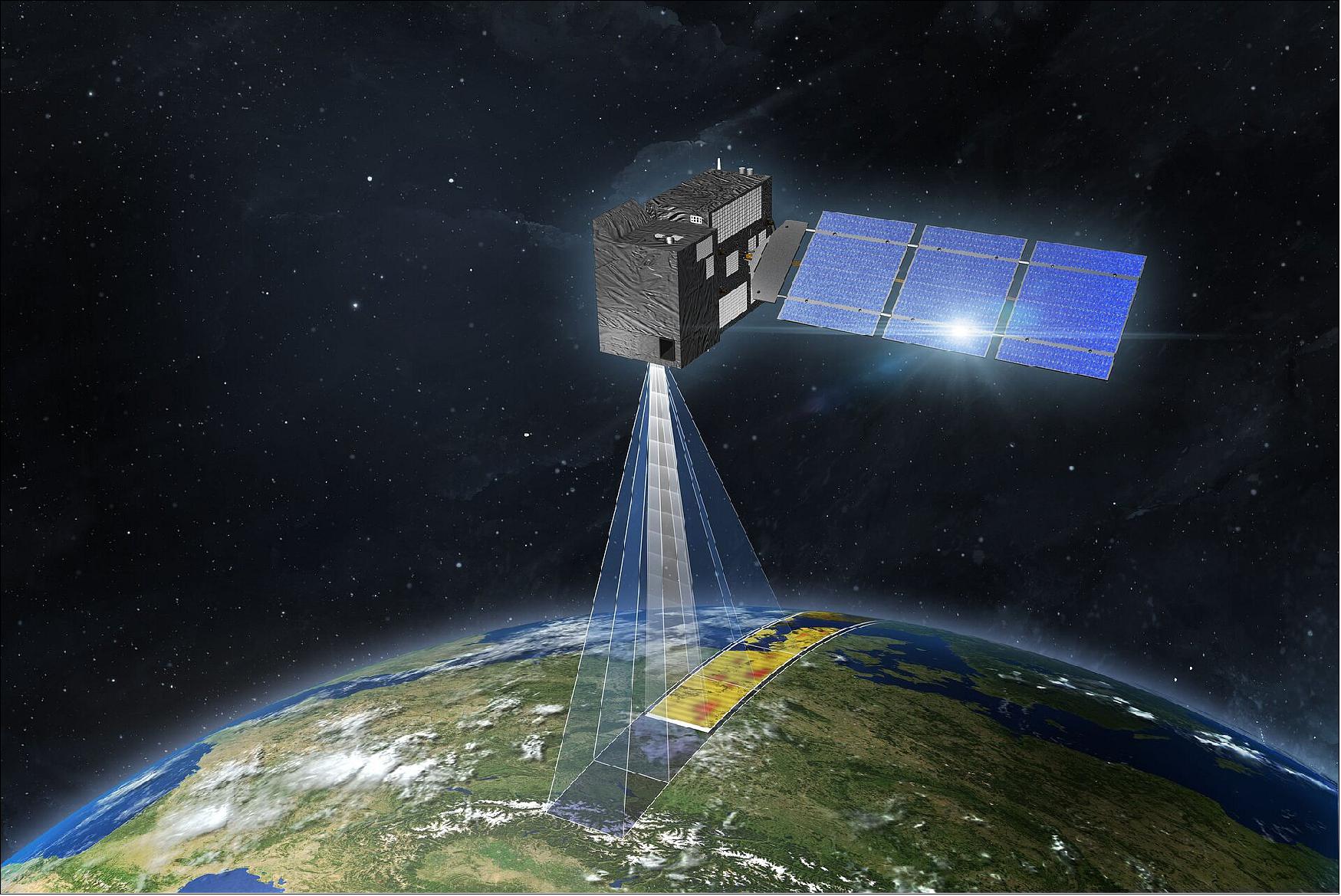
Development Status
• May 23, 2022: The Copernicus Anthropogenic Carbon Dioxide Monitoring (CO2M) mission, part of the Copernicus Sentinel Expansion missions, is progressing as the European Space Agency has authorized prime contractor OHB to continue developing the first satellite and start production on the second satellite. CO2M aims to monitor anthropogenic carbon emissions, supporting global efforts to reduce greenhouse gases. The two satellites will carry spectrometers to measure atmospheric carbon dioxide at high spatial resolution, aiding in tracking emissions from fossil fuel combustion. The mission will provide essential data for assessing the effectiveness of policy measures and promoting transparency in meeting decarbonization targets. 2)
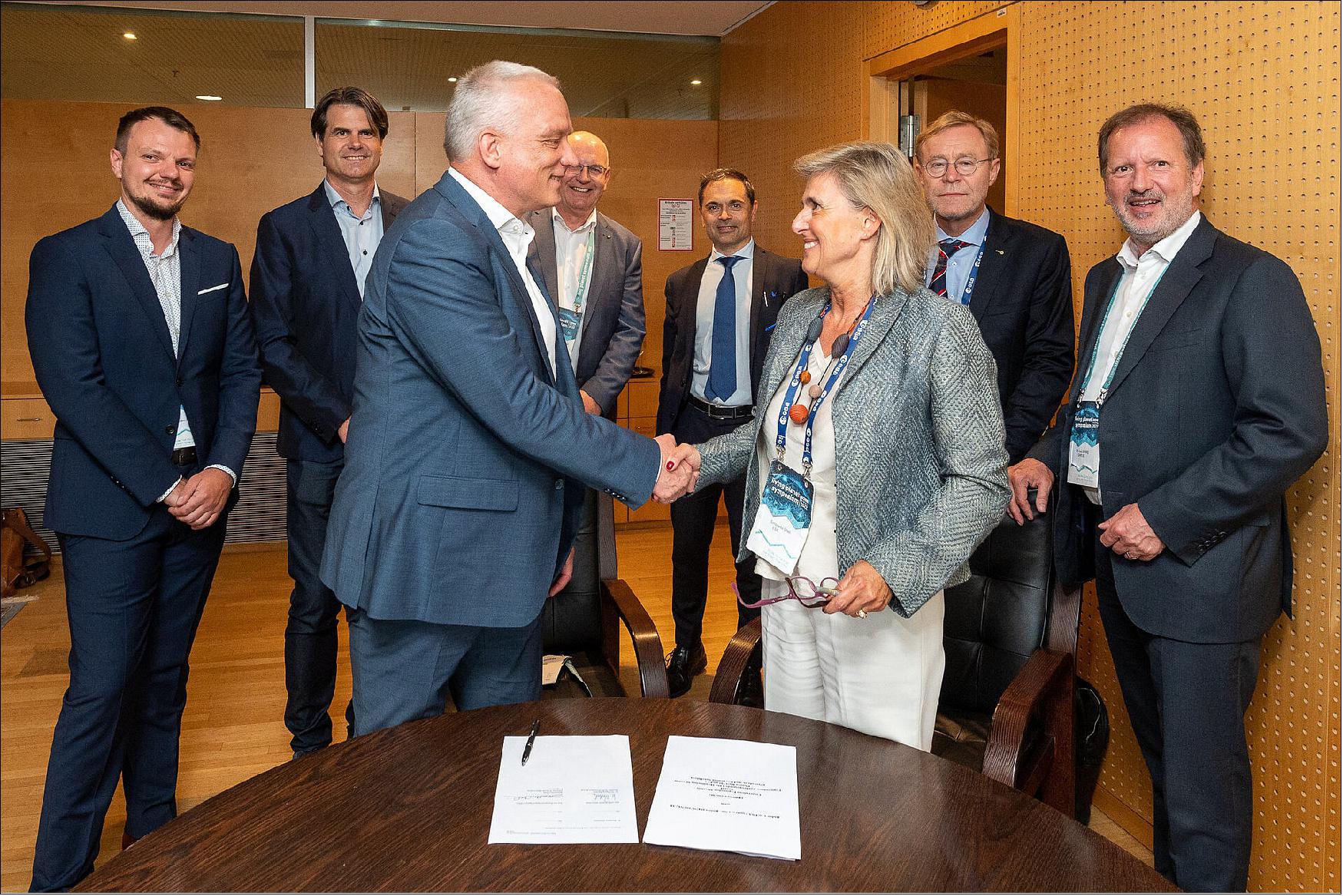
• January 24, 2022: The European Space Agency shared European plans and expertise on measuring carbon dioxide and methane from space with the U.S. President’s Council of Advisors on Science and Technology (PCAST). Yasjka Meijer, mission scientist for the Copernicus Anthropogenic CO2M (Carbon Dioxide Monitoring) mission, made recommendations in a PCAST meeting, focusing on satellite resources to monitor greenhouse gases. The CO2M mission, part of the Copernicus Sentinel Expansion missions, involves two satellites carrying spectrometers to measure atmospheric carbon dioxide and methane, providing crucial data to map greenhouse gas emissions and assess the effectiveness of policy measures. The U.S. currently lacks a secured greenhouse gas satellite mission for the future, highlighting the importance of international cooperation in monitoring emissions. 3)
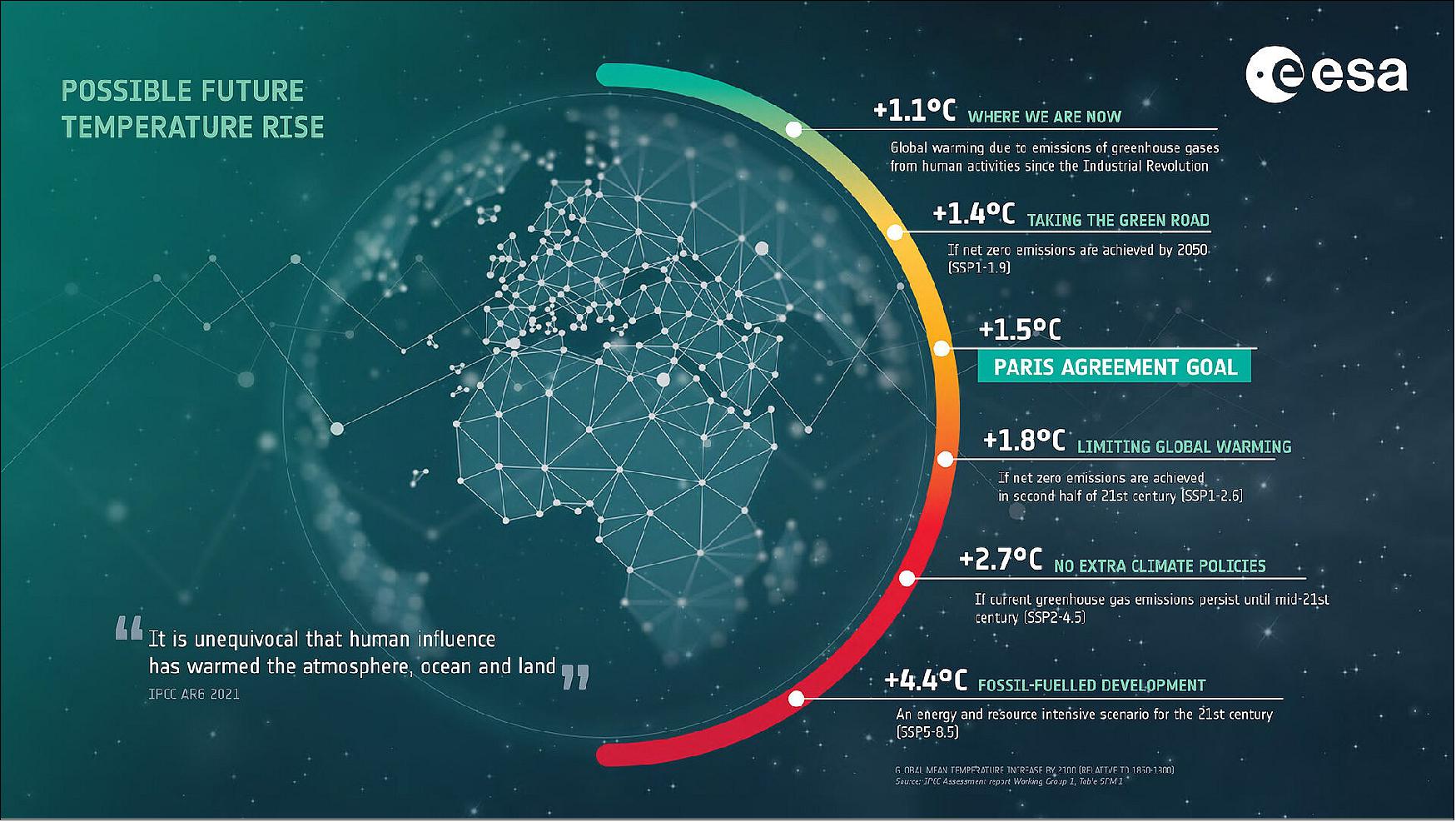
• November 10, 2021: ESA is rigorously testing the Copernicus Anthropogenic Carbon Dioxide Monitoring Mission satellite at its Test Centre in the Netherlands. The satellite's structural model is undergoing tests to ensure its mechanical integrity and ability to withstand launch vibrations. The measurements taken by the satellite will be used by the new CO2M Monitoring and Verification Support Capacity, which the ECMWF (European Centre for Medium-Range Weather Forecasts) is developing. 4)
• July 31, 2020: ESA and OHB System AG have signed a €445 million contract to build the first two satellites for the Copernicus Carbon Dioxide Monitoring (CO2M) mission. OHB will lead the industrial consortium, overseeing the development of the satellite platforms, while Thales Alenia Space will supply the instruments, including a near-infrared and shortwave-infrared spectrometer to measure carbon dioxide emissions. The data collected will contribute to monitoring and implementing targets outlined in the Paris Agreement, providing globally comparable information on anthropogenic emissions. The contract for the CO2M mission is the first to be signed following ESA’s industrial committee approval to proceed with the development of the six new Copernicus high-priority missions earlier this month. 5) 6)
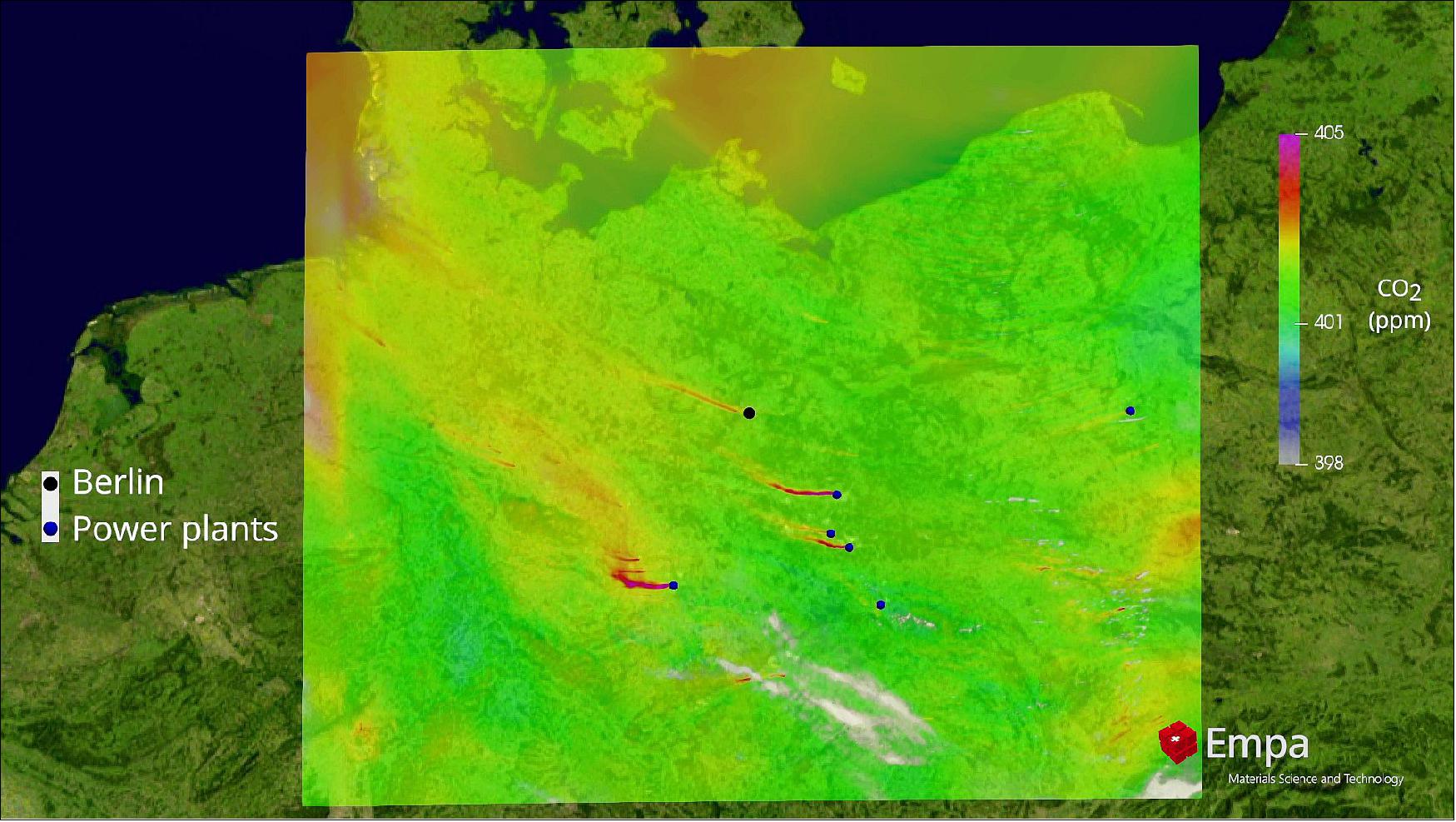
• July 3, 2020: ESA's industrial policy committee has approved contracts totaling €2.55 billion for the development of six new Copernicus satellite missions. Each mission consists of two satellites, a development unit, and a recurrent unit. The project is co-funded by the EU and ESA Member States and is contingent on future funding from the EU Multiannual financial framework. The approval marks a crucial step in starting industrial contracts for the missions, subject to an agreement between ESA and the EU for the co-funded portion of the program and a positive decision by the European Commission (EC) and ESA/EU Member States to progress from Phase B2 to Phase C/D, which is anticipated in the second half of 2021. 7)
References
1) ”European Union’s Copernicus program is planning a monitoring capacity for anthropogenic CO2 emissions,” EU, Copernicus, 29 November 2018, URL: https://atmosphere.copernicus.eu/european-unions-copernicus-programme-planning-monitoring-capacity-anthropogenic-co2-emissions
2) ”Full steam ahead for carbon dioxide monitoring mission,” ESA Applications, 23 May 2022, URL: https://www.esa.int/Applications/Observing_the_Earth/Copernicus/Full_steam_ahead_for_carbon_dioxide_monitoring_mission
3) ”ESA supports the White House on greenhouse gas monitoring,” ESA Applications, 24 January 2022, URL: https://www.esa.int/Applications/Observing_the_Earth/Copernicus/ESA_supports_the_White_House_on_greenhouse_gas_monitoring
4) ”Carbon dioxide monitoring satellite given the shakes,” ESA Applications, 10 November 2021, URL: https://www.esa.int/Applications/Observing_the_Earth/Copernicus/Carbon_dioxide_monitoring_satellite_given_the_shakes
5) ”Contract signed to build Europe’s carbon dioxide monitoring mission,” ESA Applications, 31 July 2020, URL: https://www.esa.int/Applications/Observing_the_Earth/Copernicus/Contract_signed_to_build_Europe_s_carbon_dioxide_monitoring_mission
6) ”Copernicus CO2 MonitoringMission Requirements Document,” ESA, 27 September 2019, URL: https://esamultimedia.esa.int/docs/EarthObservation/CO2M_MRD_v2.0_Issued20190927.pdf
7) ”Contracts awarded for development of six new Copernicus missions,” ESA Applications, 03 July 2020, URL: http://www.esa.int/Applications/Observing_the_Earth/Copernicus/Contracts_awarded_for_development_of_six_new_Copernicus_missions